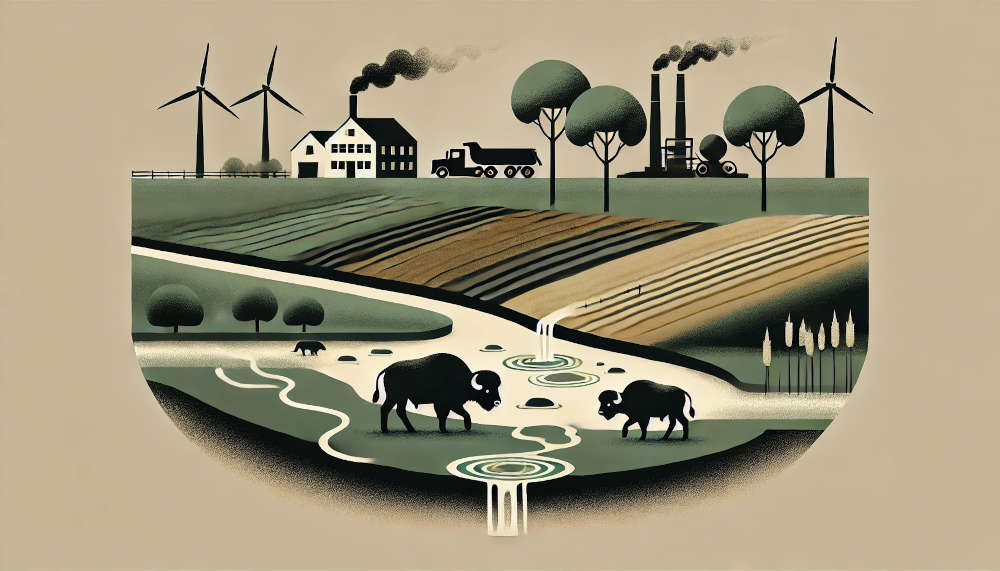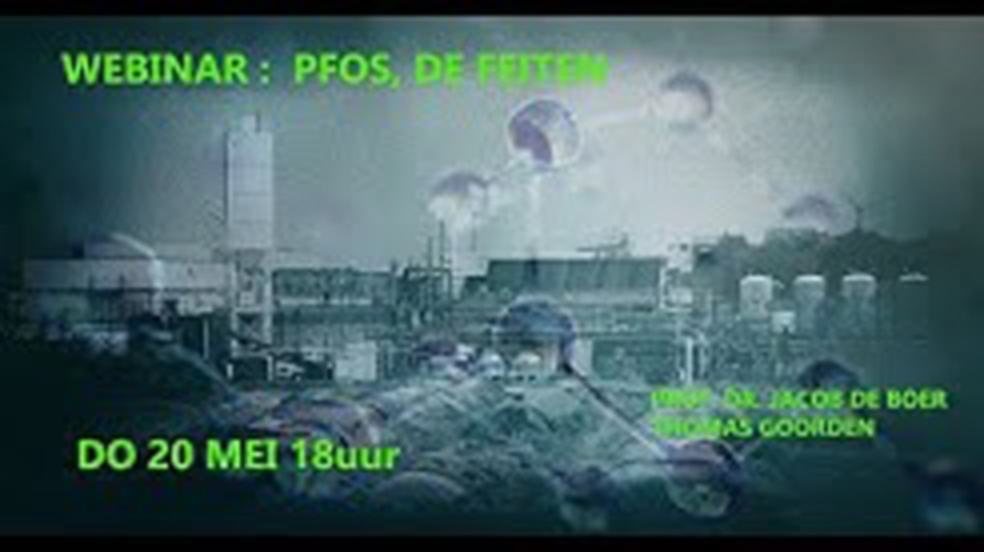12.02.2025 | Grondrecht
De impact van ‘eeuwige chemicaliën’ blijft toenemen in Zeeland en Vlaanderen
Buffelkadavers in Saeftinghe: De zichtbare gevolgen van PFAS-verontreiniging
Tijdens een winterwandeling eind 2024 in het natuurgebied Verdronken Land van Saeftinghe ontdekten Leo Broeckaart en zijn vrouw een gruwelijk tafereel: zes mannelijke waterbuffels lagen dood in hun eigen bloed. Deze dieren maakten deel uit van een kudde die een belangrijke rol speelt in het natuurbeheer van dit Natura 2000-gebied.
De buffels konden echter niet langer blijven grazen in het gebied. Door de aanwezigheid van PFAS in de omgeving werden de dieren door de autoriteiten geblokkeerd en mocht hun vlees niet in de voedselketen terechtkomen. Roeland Vermeulen van natuurorganisatie Free Nature verklaarde dat de mannelijke dieren moesten worden geëuthanaseerd om verdere voortplanting te voorkomen, aangezien verplaatsing of slacht verboden was door het risico op PFAS-besmetting van ander vlees.
Hoe kwam PFAS in Saeftinghe terecht?
De vervuiling is grotendeels terug te voeren op de productie van PFAS bij het chemiebedrijf 3M in de haven van Antwerpen, ongeveer 10 kilometer verderop. Via het water van de Westerschelde zijn deze persistent schadelijke stoffen in de planten en dieren van het gebied terechtgekomen.
PFAS – vaak omschreven als ‘eeuwige chemicaliën’ vanwege hun bijna onbreekbare structuur – hebben ernstige gevolgen voor zowel de natuur als de gezondheid van mens en dier.
Veebedrijven rond Saeftinghe geblokkeerd door PFAS
Niet alleen de natuur heeft te lijden onder de vervuiling. Vijf veebedrijven in de omgeving zijn al maanden stilgelegd nadat er bij bodemonderzoeken in de Prosperpolder en omringende gebieden hoge concentraties PFAS werden aangetroffen in het bloed van vee, zoals koeien, schapen en buffels.
Volgens het Belgische voedselagentschap (FAVV) overschreden de gemeten PFAS-niveaus de toegestane normen met een factor vier. Als gevolg hiervan werden drie Belgische en meerdere Nederlandse bedrijven geblokkeerd. Hun dieren mogen alleen worden geslacht als het vlees na controle voldoet aan de PFAS-veiligheidsnormen.
Reacties van getroffen landbouwers: “Onze inkomsten zijn verdwenen”
Harry de Vlieger, een Nederlandse schapenhouder die al twintig jaar zijn dieren laat grazen in het Verdronken Land, beschrijft de situatie als een “nachtmerrie”. Hij kan zijn schapen niet verkopen voor slacht of fokkerij; de enige optie is vernietiging via destructiebedrijf Rendac.
💬 “Ik heb geen inkomsten meer, maar mijn kosten blijven oplopen,“ aldus De Vlieger.
De getroffen landbouwers hebben voorlopig afgezien van publieke verklaringen omdat zij zich in overleg bevinden met de voedselagentschappen en mogelijk juridische stappen overwegen tegen 3M.
Vraag naar een PFAS-steunfonds groeit
De Boerenbond gebruikt deze crisis om hun oproep voor een steunfonds kracht bij te zetten. Volgens woordvoerster Tessa De Prins zijn de veehouders rond Saeftinghe niet de enigen die lijden onder PFAS-vervuiling. Ook in de provincie Antwerpen en rond Zwijndrecht kampen tientallen boeren met verontreinigde landbouwgronden.
Het recent gesloten federale en Vlaamse regeerakkoord voorziet in de oprichting van een PFAS-fonds, dat gefinancierd zal worden door de industrie ter compensatie van de geleden schade.
Juridische stappen in voorbereiding tegen 3M
Het Zeeuwse Landschap, eigenaar van het Verdronken Land, heeft zich aangesloten bij een rechtszaak die door de Nederlandse overheid wordt voorbereid tegen 3M. Directeur Rob van Westrienen uitte zijn frustratie over de situatie:
💬 “Het is tragisch wat we met onze natuur hebben gedaan. We hebben het zover laten komen dat zelfs in beschermde natuurgebieden geen grazend vee meer mogelijk is.“
Van Westrienen benadrukt dat het verdienmodel van hun natuurbeheer is weggevallen, aangezien dieren die niet naar de slacht kunnen, enkel kosten veroorzaken.
PFAS-vervuiling: Een wereldwijd probleem zonder eenvoudige oplossing
De problemen in Saeftinghe en Vlaanderen zijn slechts het topje van de ijsberg. Wereldwijd worden ecosystemen aangetast door koolstoffluorbindingen, die bijna onmogelijk zijn af te breken. Zelfs de poolkappen zijn niet immuun voor deze vervuiling.
De kosten van het opruimen van PFAS zijn astronomisch. In Europa alleen al wordt geschat dat een volledige sanering jaarlijks meer dan 100 miljard euro zou kosten. Toch blijven industrieën en lobbygroepen zich verzetten tegen strengere regelgeving, onder het argument dat het verbieden van PFAS de industriële groei en de transitie naar een groene economie zou belemmeren.
Oproep tot een totaalverbod op PFAS
Ondanks de hoge kosten en technische uitdagingen lijkt een verbod op PFAS de enige haalbare oplossing om verdere milieuschade en gezondheidsrisico’s te beperken. De industrie betoogt dat niet alle PFAS even schadelijk zijn, maar wetenschappers waarschuwen dat de gezondheidsrisico’s en milieuschade uiteindelijk veel duurder zullen uitvallen dan het ontwikkelen van alternatieven.
Zelfs met een toekomstig verbod zal de belastingbetaler uiteindelijk opdraaien voor de kosten van de vervuiling, aangezien bedrijven mogelijk niet in staat zijn om de volledige financiële verantwoordelijkheid te dragen.ieke kenmerken van Vlaanderen.
Bron:
https://www.standaard.be/cnt/dmf20250210_97793084?utm_recirculatie=lees-ook



